Wei-Yu Chen
Interpreting the Learned Model in MuZero Planning
Nov 07, 2024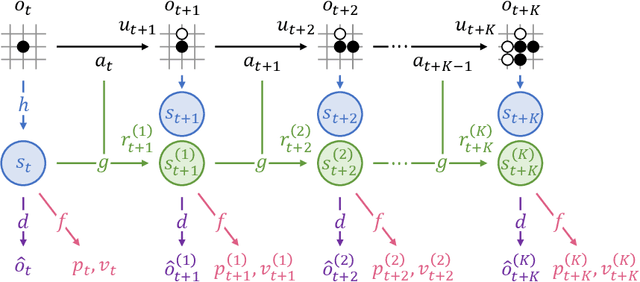
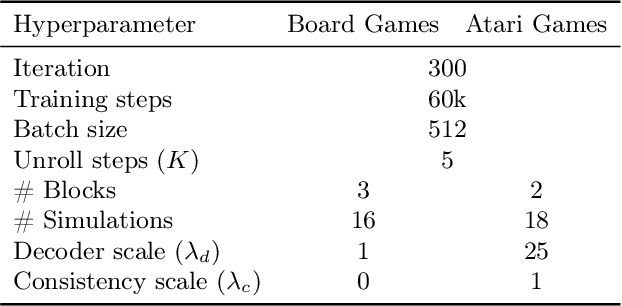
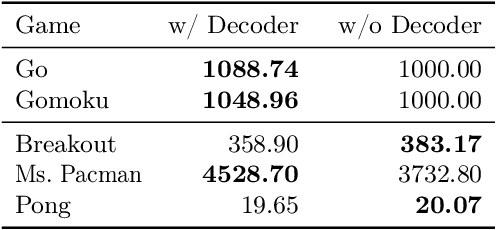
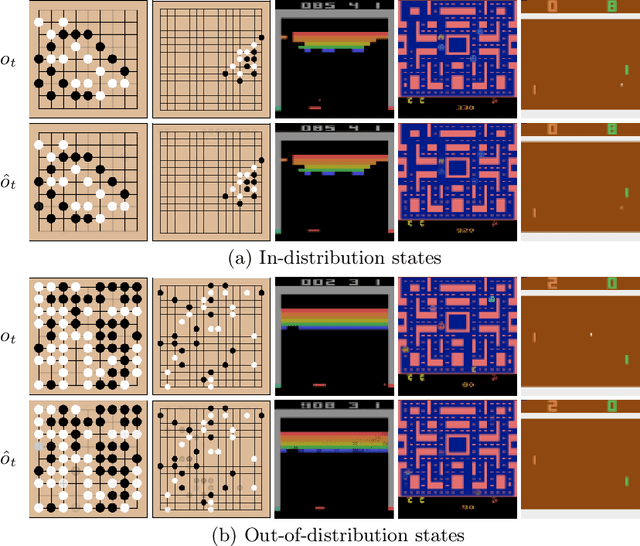
Abstract:MuZero has achieved superhuman performance in various games by using a dynamics network to predict environment dynamics for planning, without relying on simulators. However, the latent states learned by the dynamics network make its planning process opaque. This paper aims to demystify MuZero's model by interpreting the learned latent states. We incorporate observation reconstruction and state consistency into MuZero training and conduct an in-depth analysis to evaluate latent states across two board games: 9x9 Go and Outer-Open Gomoku, and three Atari games: Breakout, Ms. Pacman, and Pong. Our findings reveal that while the dynamics network becomes less accurate over longer simulations, MuZero still performs effectively by using planning to correct errors. Our experiments also show that the dynamics network learns better latent states in board games than in Atari games. These insights contribute to a better understanding of MuZero and offer directions for future research to improve the playing performance, robustness, and interpretability of the MuZero algorithm.
Intelligent Tutor: Leveraging ChatGPT and Microsoft Copilot Studio to Deliver a Generative AI Student Support and Feedback System within Teams
May 15, 2024Abstract:This study explores the integration of the ChatGPT API with GPT-4 model and Microsoft Copilot Studio on the Microsoft Teams platform to develop an intelligent tutoring system. Designed to provide instant support to students, the system dynamically adjusts educational content in response to the learners' progress and feedback. Utilizing advancements in natural language processing and machine learning, it interprets student inquiries, offers tailored feedback, and facilitates the educational journey. Initial implementation highlights the system's potential in boosting students' motivation and engagement, while equipping educators with critical insights into the learning process, thus promoting tailored educational experiences and enhancing instructional effectiveness.
Pointersect: Neural Rendering with Cloud-Ray Intersection
Apr 24, 2023Abstract:We propose a novel method that renders point clouds as if they are surfaces. The proposed method is differentiable and requires no scene-specific optimization. This unique capability enables, out-of-the-box, surface normal estimation, rendering room-scale point clouds, inverse rendering, and ray tracing with global illumination. Unlike existing work that focuses on converting point clouds to other representations--e.g., surfaces or implicit functions--our key idea is to directly infer the intersection of a light ray with the underlying surface represented by the given point cloud. Specifically, we train a set transformer that, given a small number of local neighbor points along a light ray, provides the intersection point, the surface normal, and the material blending weights, which are used to render the outcome of this light ray. Localizing the problem into small neighborhoods enables us to train a model with only 48 meshes and apply it to unseen point clouds. Our model achieves higher estimation accuracy than state-of-the-art surface reconstruction and point-cloud rendering methods on three test sets. When applied to room-scale point clouds, without any scene-specific optimization, the model achieves competitive quality with the state-of-the-art novel-view rendering methods. Moreover, we demonstrate ability to render and manipulate Lidar-scanned point clouds such as lighting control and object insertion.
Fisheye traffic data set of point center markers
Jan 31, 2023Abstract:This study presents an open data-market platform and a dataset containing 160,000 markers and 18,000 images. We hope that this dataset will bring more new data value and applications In this paper, we introduce the format and usage of the dataset, and we show a demonstration of deep learning vehicle detection trained by this dataset.
Enhancing Speckle Statistics for Imaging inside Scattering Media
Mar 27, 2022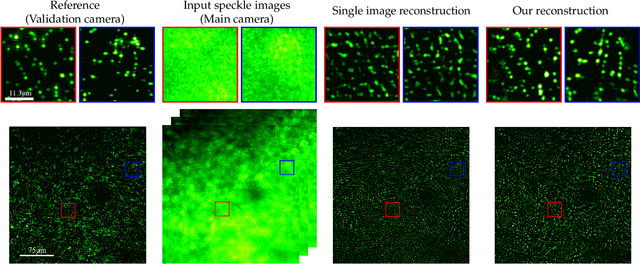
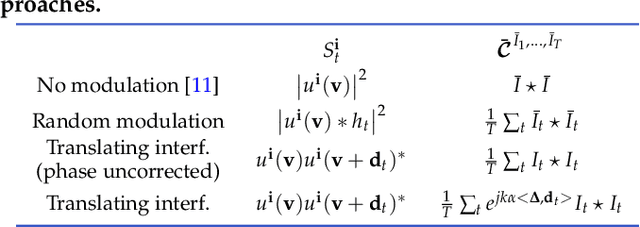
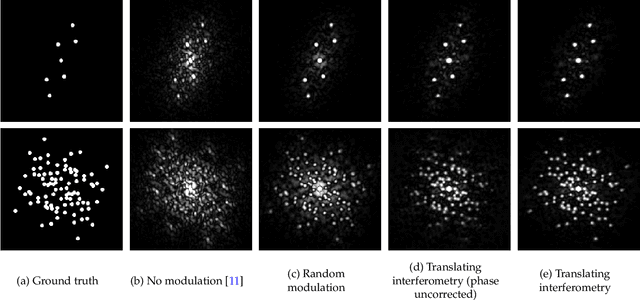
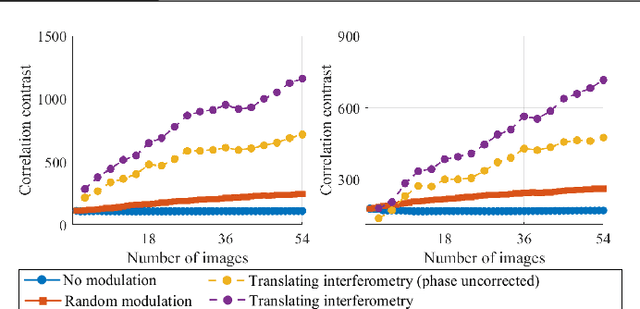
Abstract:We exploit memory effect speckle correlations for the imaging of incoherent linear (single-photon) fluorescent sources behind scattering tissue. While memory effect-based imaging techniques have been heavily studied in the past, for thick scattering layers and complex illumination patterns these correlations are weak, limiting the practice applicability of the idea. In this work, we introduce a Spatial Light Modulator (SLM) between the tissue sample and the imaging sensor and capture multiple modulations of the speckle pattern. We show that by correctly designing the modulation pattern and the reconstruction algorithm we can greatly enhance statistical correlations in the data. We exploit this to demonstrate the reconstruction of mega-pixel wide fluorescent patterns behind scattering tissue.
A Closer Look at Few-shot Classification
Apr 08, 2019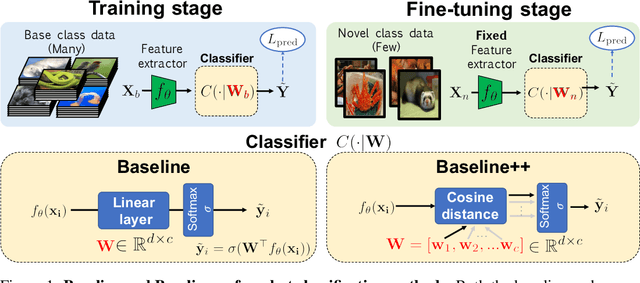



Abstract:Few-shot classification aims to learn a classifier to recognize unseen classes during training with limited labeled examples. While significant progress has been made, the growing complexity of network designs, meta-learning algorithms, and differences in implementation details make a fair comparison difficult. In this paper, we present 1) a consistent comparative analysis of several representative few-shot classification algorithms, with results showing that deeper backbones significantly reduce the performance differences among methods on datasets with limited domain differences, 2) a modified baseline method that surprisingly achieves competitive performance when compared with the state-of-the-art on both the \miniI and the CUB datasets, and 3) a new experimental setting for evaluating the cross-domain generalization ability for few-shot classification algorithms. Our results reveal that reducing intra-class variation is an important factor when the feature backbone is shallow, but not as critical when using deeper backbones. In a realistic cross-domain evaluation setting, we show that a baseline method with a standard fine-tuning practice compares favorably against other state-of-the-art few-shot learning algorithms.
No More Discrimination: Cross City Adaptation of Road Scene Segmenters
Apr 27, 2017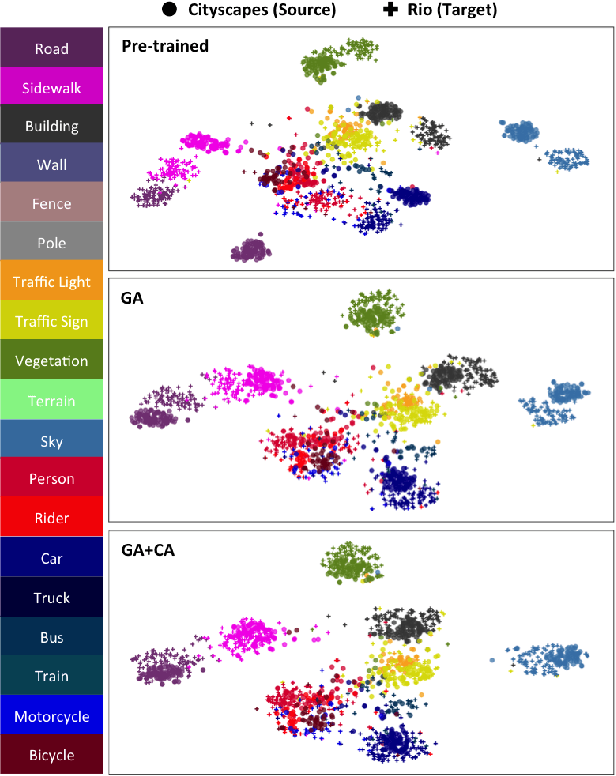
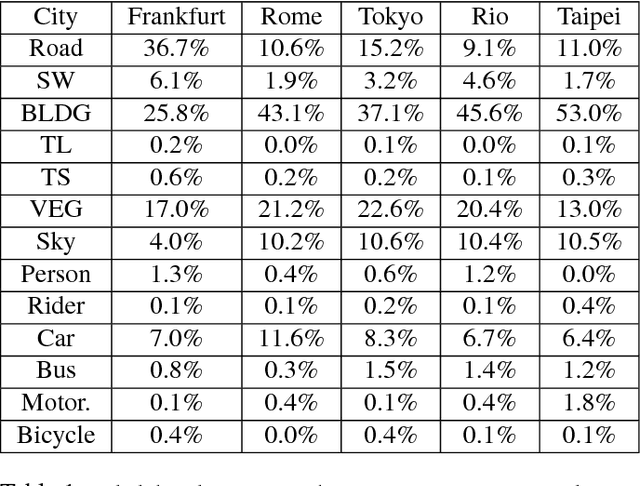


Abstract:Despite the recent success of deep-learning based semantic segmentation, deploying a pre-trained road scene segmenter to a city whose images are not presented in the training set would not achieve satisfactory performance due to dataset biases. Instead of collecting a large number of annotated images of each city of interest to train or refine the segmenter, we propose an unsupervised learning approach to adapt road scene segmenters across different cities. By utilizing Google Street View and its time-machine feature, we can collect unannotated images for each road scene at different times, so that the associated static-object priors can be extracted accordingly. By advancing a joint global and class-specific domain adversarial learning framework, adaptation of pre-trained segmenters to that city can be achieved without the need of any user annotation or interaction. We show that our method improves the performance of semantic segmentation in multiple cities across continents, while it performs favorably against state-of-the-art approaches requiring annotated training data.
 Add to Chrome
Add to Chrome Add to Firefox
Add to Firefox Add to Edge
Add to Edge